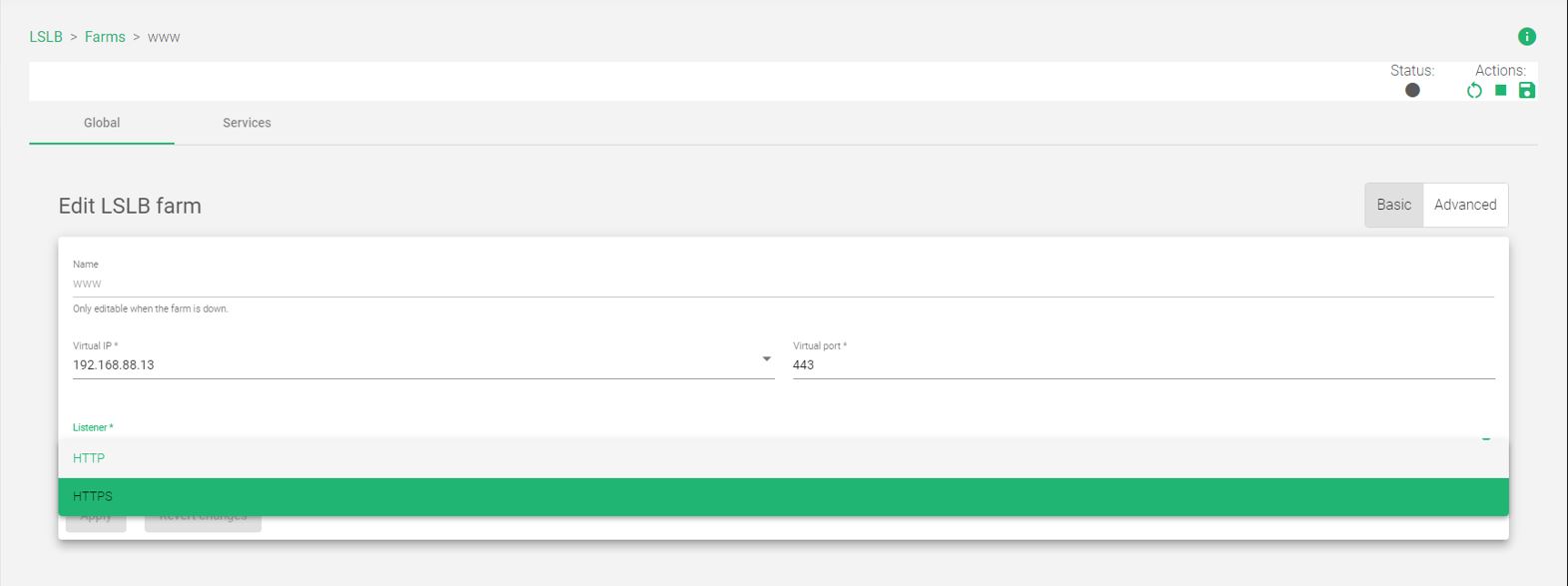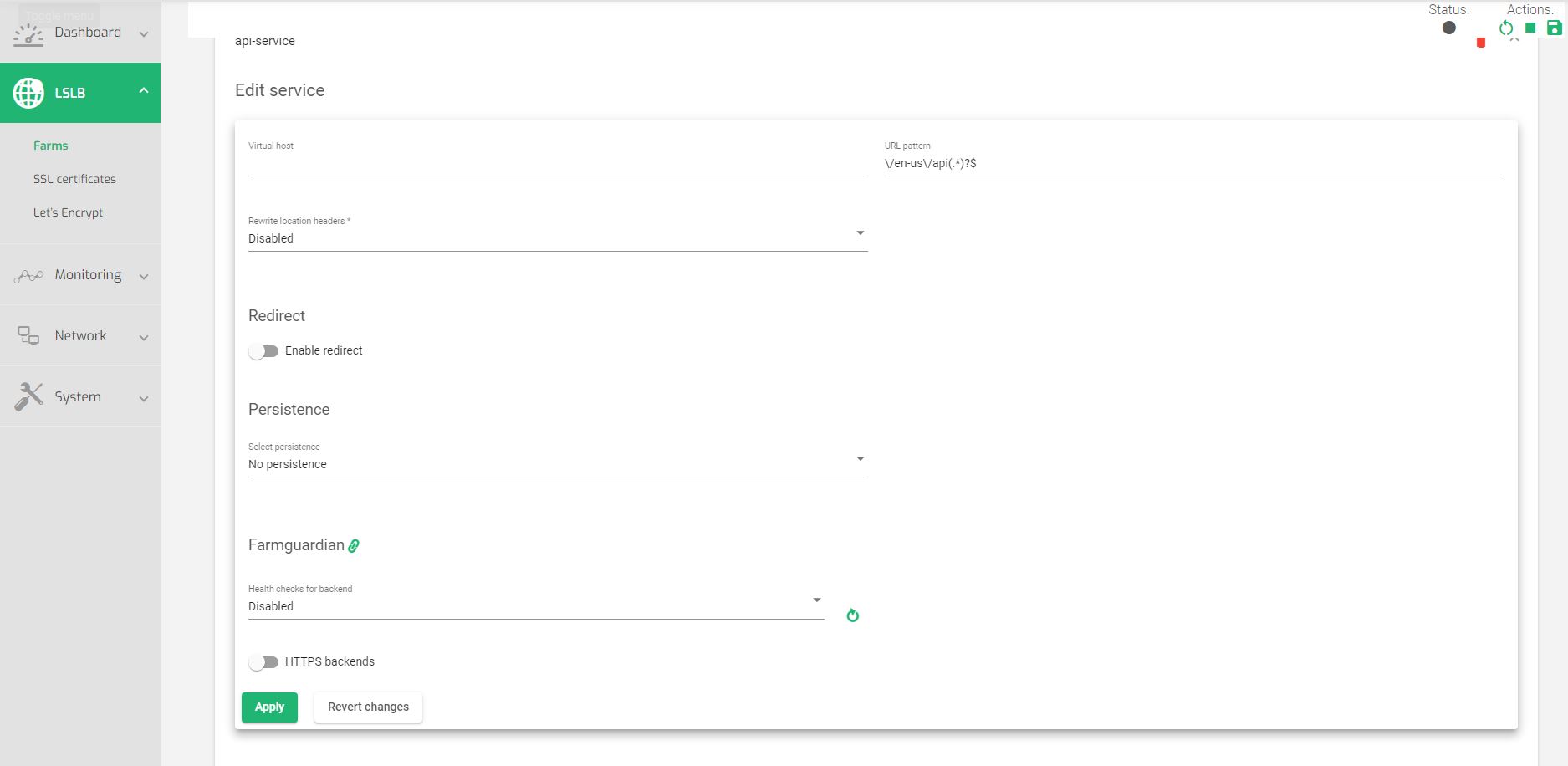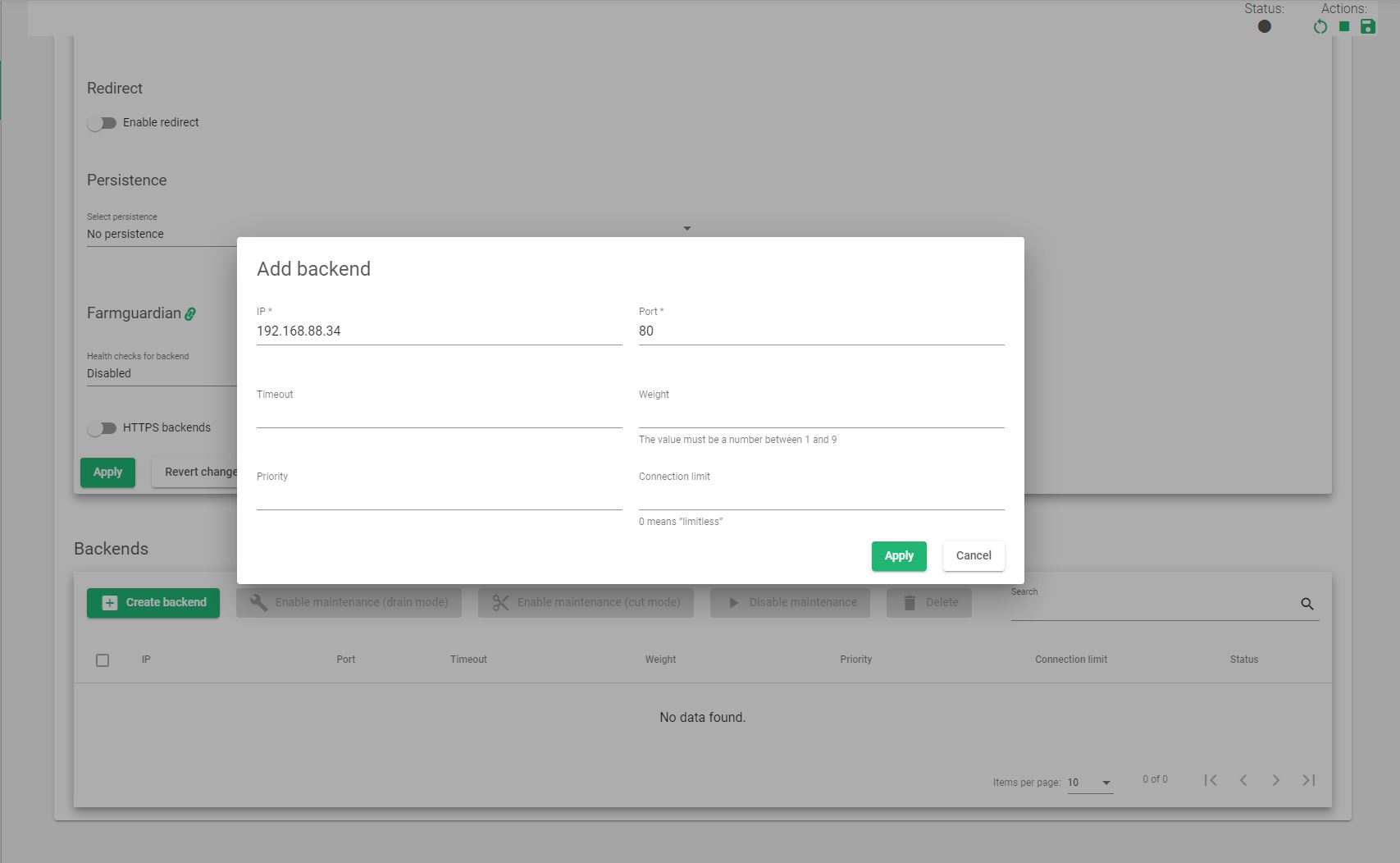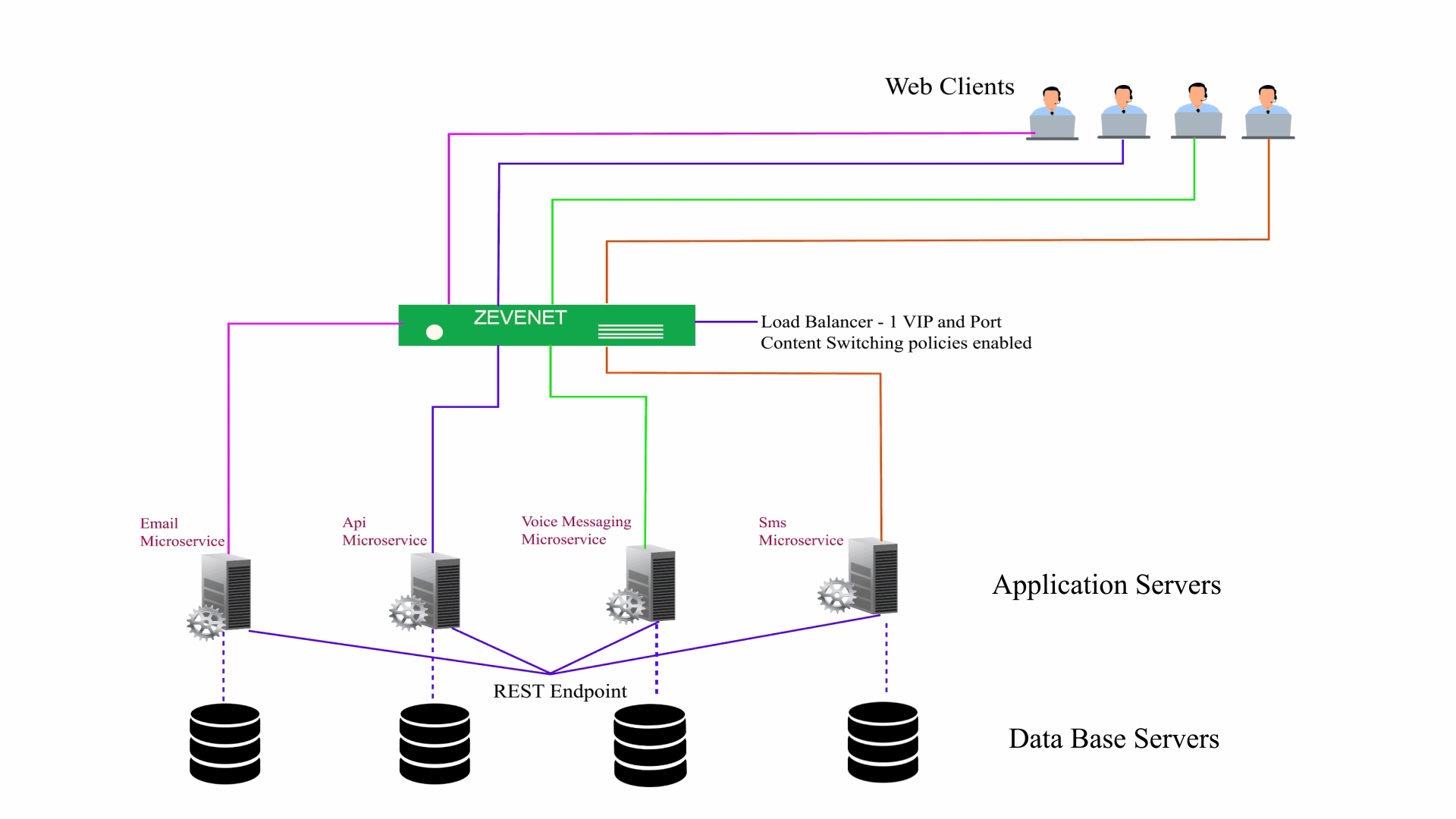Introduction #
Content switching holds immense potential in driving business success through intelligent traffic routing. By dynamically redirecting user requests to the most suitable servers or resources, businesses can achieve improved performance, reduced response times, and enhanced availability of their services to their users.
To accomplish these objectives, we install an Application Delivery Controller capable of performing load balancing, fault tolerance, scalability tasks, and security at Layer 4 through to the application layer. This empowers organizations to effectively manage the increasing demands of their users.
By leveraging Relianoid ADC for content-switching, companies can optimize online operations, deliver exceptional user experiences, and achieve business growth objectives.
Content switching forms. #
Relianoid offers various forms of content switching. These include, host and URL-based content switching, and that based on session persistence.
With session persistence, your brand may easily retarget users of your application with personalized content. For example, if they forgot to checkout after adding items in their cart, you may send them an alert reminding them to complete the tasks, hence maximizing revenue.
With URL-based content-switching, you’ll easily isolate users of different products so you can send personalized content based on their subscriptions.
For this guide, we shall focus about URL or path-based content switching.
Path-Based Traffic Routing: Customizing User Experience. #
Say, you have an e-business that offers various software products/services. These could be sms, email, voice messaging, api consumption, etc., and there is varying demand for each of these depending on the season, sometimes the time of the day.
When the traffic for a particular service or product spikes, you want your application to scale accordingly. We can scale these services horizontally or vertically, but vertical scalability presents many limitations. Horizontally, it gets easier to scale with increasing and decreasing demand.
One way to isolate the services or products for scalability is to build the application on a microservices architecture. This way, we can perform host-based, or sometimes path-based content-switching on each independent microservice without affecting other functionality on the same web application.
Say you own a domain, and you have four microservices on the paths,
/en-us/sms/
/en-us/email/
/en-us/voice-messaging/
/en-us/api/.
We ought to scale each of these of these based on user demand. Assuming all backend servers and API endpoints within the microservices are configured, the next step is to enable content switching with Relianoid ADC. Relianoid will route ingress traffic to the appropriate server pool(service) based on the user’s URL input.
Step-by-step guide: path-based content switching with RELIANOID ADC. #
After logging into the ADC’s dashboard, we must configure the networks. The ADC must communicate with ease to the internal networks as well the external ones.
Network Interface Card Configurations. #
- On the left sidebar, click Network > NIC.
- Within the table, hover over the active interface and click the pencil Icon with the Edit label. The active interface has a Status with a Green circle.
- Assign an IP address to the interface in IPV4 or IPV6 format.

- Enter the Netmask for the interface.
- Within the Gateway field, enter the IP address of the router.
- Click Apply to save the configurations.
Within the NIC list, you will see that your interface has an IP address and can be accessed by other networks.
Add a Virtual interface. #
- Click Network > Virtual interfaces > Create virtual interface.
- Select the Parent interface from the list of interfaces you just created in the NIC section.

- Enter a virtual interface name. The name must only contain alphanumeric values without spaces and must have a maximum length of 8 characters.
- Enter the IP address of the virtual interface in IPV4 or IPV6 format. The IP address must be in the same network as the Parent interface.
- Click the Apply button to save the configurations.
All virtual interfaces are meant to be accessed by the external networks. Ping on the ip address you just created from an external network. If in a virtual environment, use the Host computer.
Create a Virtual Server. #
- To create a virtual server, click LSLB > Farms > Create farm.
- Enter a Name to identify the farm.

- Select a virtual IP address from the virtual interfaces you created in the Network > virtual interfaces section.
- For the profile, Select HTTP since content switching is a layer 7 process.
- Enter the virtual port 80 for Unsecure HTTP traffic or 443 for Secure HTTPS traffic.
- Click the Apply button to save the configurations. Another form will show up with similar details.
- For secure HTTPS traffic, select the listener as HTTPS.

- Do not change the HTTPS parameters, as it is not recommended.
- Within the Ciphers field, either select All, High Security, or Custom Security. High security will provide the necessary protection high enough to receive an A+ grade with SSL labs.

- With Custom security, you will configure your own Cipher suite within the Custom cipher field.
- Within the Certificate field, select an SSL certificate for your web application. If you have not installed one yet, Read this article. LSLB | SSL Certificates.
- Click the Apply button to save the configurations.
Configuring Microservices as Relianoid services. #
- Switch to the Services tab.
- Click the New Service button.
- Enter the Name to identify the service and click the Apply button.
- Click on the service you just created to expand it so you can have access to other fields.
- Using the PCRE format, enter a regular expression in the URL pattern field. To match the URL path /en-us/api, we shall use the regular expression ,\/en-us\/api(.*)?$. Any traffic on the url that follows this pattern will be processed by the backend servers of this microservice.

- You can optionally configure more content-switching policies by enabling Persistence.
- Click the Apply button to save the configurations.
Add application servers. #
This section is where we add the application servers processing the requests.
- Within the backend section of the service, click Create Backend.

- Enter the IP address of the backend to process all traffic for API consumers.
- Enter the Port number for the backend server.
- Click the Apply button to save the configurations.
- Repeat the process of adding new microservices for the remaining paths.
The regular expressions for the other paths follow the patterns:
microservice – sms
Regular expression: \/en-us\/sms(.*)?$
microservice – voice messaging
Regular expression: \/en-us\/voice-messaging(.*)?$
microservice – email
Regular expression: \/en-us\/email(.*)?$
Overcoming Challenges: Seamless Implementation for Optimal Results #
Implementing content switching may present its fair share of challenges, but with practical solutions, your business can overcome them and achieve optimal results. Here are some common challenges and their corresponding solutions:
Complex Configuration #
Content-switching configurations can be mind-boggling sometimes, especially when dealing with multiple servers and routing rules. To address this challenge, Relianoid ADC with its user-friendly interface will help streamline the configuration process and ensure smooth implementation.
Scalability and Performance #
As traffic volumes increase, ensuring scalability and maintaining optimal performance becomes crucial. Implementing layer 4 load balancers and leveraging cloud-based solutions may help distribute traffic efficiently, handle increasing loads, and adapt to changing demands.
Security and Compliance: #
Implementing content switching should not compromise security or violate compliance regulations. Incorporating robust security measures, such as SSL encryption, DDoS protection, and a WAF are imperative. Additionally, staying up-to-date with industry standards and regulatory requirements ensures compliance throughout the content-switching implementation.
Testing and Monitoring #
Relianoid’s monitoring and alert system provides comprehensive visibility and proactive notifications to ensure optimal performance and security of your network infrastructure. By continuously monitoring your metrics like network traffic, farm performance, and the health of the ADC in real-time, you will have a holistic view of your infrastructure and identify any anomalies.
By proactively addressing and implementing practical solutions, businesses will overcome hurdles in content switching, optimize smart traffic routing, enhance web application performance, and ultimately, business growth.
For Additional security features, including DDoS protection, Web Application Firewall, Realtime Role Based Blocklists, and more advanced networking features like floating IPs, Upgrade to Relianoid Enterprise.
Conclusion #
Content switching is a powerful tool that businesses should leverage to captivate customers, increase conversions, and achieve lasting success. With Relianoid ADC, businesses can deliver personalized experiences that resonate with their audience. This leads to higher customer engagement, improved conversions, and long-term customer satisfaction. With the potential to enhance backend server performance, provide seamless user experiences, and drive business growth, content switching is a strategy that businesses should embrace.




